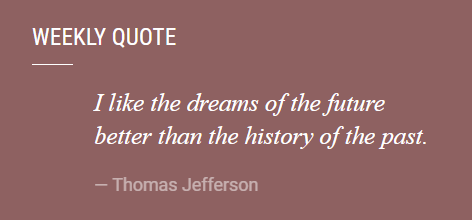Today's office visit to a doctor involves a patient, a family member, and a physician 97% of the time. Tomorrow's visit will engage nurse practitioners, nutritionists, genetic counselors, pharmacists, therapists, social workers, mental health professionals, and exercise coaches. The Internet enables clinicians to connect patients at different times based on need, not travel burden. Just as more clinicians will contact patients, more caregivers including children living in different cities and countries will participate remotely in visits through video conferencing.
The nature of visits will also change. Patient-generated data creates the opportunity for the visit to be a true data exchange. Tomorrow's visit will include objective, high frequency and real-time streaming data, including blood pressure, glucose levels, activity levels, diet, and social engagement metrics. Patients will control the data from novel sensors and grant clinicians access at the patients' direction.
As many visits will be remote, the physical exam will approach a medical selfie. Smartphone attachments, some of which are already cleared by the FDA, will help perform the physical exam, including taking vital signs, listening to heart sounds, and visualizing ear drums with greater clarity that will enable clinicians and patients to see what was previously invisible to them.
Tomorrow's office visit will be separated by time and space. Asynchronous health communications (e.g., text) will increase. Patients will update their health and pose questions, and clinicians will provide responses and educational content in reply. Synchronous video visits will be a 24/7 service. As the need for clinics diminishes, the ability to deliver evening, night, and weekend consultations will increase. Kaiser Permanente of Northern California now has more email (separated by time), phone, and video (separated by space) visits than traditional office visits.
Tomorrow's office visit will increasingly take place everywhere but the office. Telehealth and the house call will become increasingly common. Health care, like other services (e.g., retail), will move from institutions to satellite clinics, homes, and mobile devices and make medical care as convenient as shopping. In-person care will also increasingly be delivered directly into the home. Nurses have long visited the home, but physician house calls, which accounted for 40% of medical encounters in the 1930's, are returning. These patient-centered visits range from a hospital at home model to smartphone applications that enable individuals to find a physician for a house call just as they find a driver for a ride. The change in travel direction (doctors coming to patients) symbolizes the power of patients to drive their care.
The substantial shortcomings of current office visits are triggering these changes. Today's 20-minute or shorter doctor visit takes 2.6 weeks on average to schedule and requires two hours of travel and waiting. While most patients like their doctor, almost no one likes going to the doctor. By contrast, tomorrow's office visit will offer patients unprecedented access to confidential, expert care that is delivered conveniently in the comfort of their homes.
The future office visit will require change. That change will initially come from outside medical establishments whose processes, policies, and economics are tied to today's outdated models. Fueled by technological advances and financial investments, new entrants will re-shape care delivery. The timing of tomorrow's visit will depend on policies changes that currently incent institution-centered care and hinder patient-centered care. That said, social forces, including the mobility of the nuclear family, the aging of populations, and the rapid adoption of technology will drive the expanded use of telemedicine visits.
These changes will have profound implications for medical centers, the profession, and patients. For medical centers, the physical and labor needs will change as demand for clinic space, waiting rooms, and parking lots will eventually decrease. For clinicians, providing care in the home will require more training to move out of hospitals. The patient-physician relationship will also change. Patients will have access to and utilize more clinicians, including experts whose geographical reach will expand. Visits may be more frequent, shorter, and remote. Local physicians will foster longitudinal relationships, ensure care is coordinated, and deliver services (e.g., procedures) that cannot be done in the home or remotely. Finally, patients will exert more control over their care and shape the future through their advocacy to receive care (largely funded by their labor and tax dollars) on their terms.
In 2001, the Institute of Medicine wrote, "Between the health care that we now have and the health care we could have lies not just a gap, but a chasm." Technology has pushed the frontiers of the possible. Now is the time to realize these new possibilities.
Ray Dorsey is a neurologist and director of the Center for Health and Technology at the University of Rochester who cares for individuals with Parkinson disease over the Internet. Eric Topol is a cardiologist, founder and director of Scripps Translational Science Institute, and the author of the books, The Creative Destruction of Medicine and The Patient Will See You Now.

